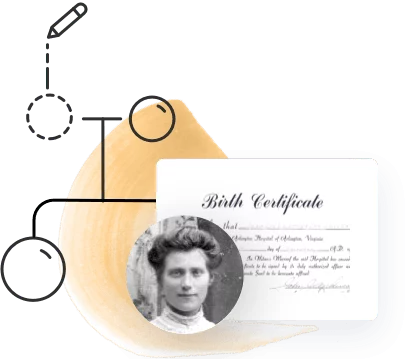
High school and university yearbooks grew in popularity in the United States starting with the use of linotype printing in the 1880s. Before that, yearbooks date back to the mid-1600s, often in the form of scrapbooks. The first published college yearbook was produced by Yale University in 1806. Since many ancestors extended their education beyond the eighth grade, with a solid research strategy, we may be able to find them in yearbooks.
The Basic Elements of a Yearbook
When working with yearbooks — either digital images or a printed copy — these are the most commonly found elements. Keep in mind that by the mid-20th century, only a few yearbook publishers existed, and they tended to use the same format for each school.
- Cover: Most covers are a solid color with contrasting print. Covers with multiple colors and color images became popular in the 1970s.
- Title page: Very often the first page of the yearbook. Information often includes school name, year, city, state, and any other related information.
- Opening section/dedication: This section serves as a welcome and introduction and includes a table of contents. A dedication may appear for a teacher, employee, or student who passed away during the school year.
- School administrators: An alphabetically arranged list of photos and titles of administrators (school superintendent, school board members, etc.).
- Faculty/staff: A section listing photos and titles of teachers and professional staff such as counselors and nurses, as well as cafeteria workers and custodial staff.
- Student portraits: Includes headshots and/or group photos by class.
- Awards: Lists students who won academic and athletic awards during the year.
- School events: Dances, school trips, spirit week, spelling bees, etc. may all have listings, usually with photos.
- Club and team activities: A section listing group photos and descriptions for safety patrol, AV club, theater club etc.
- Senior class: Extensive listings with senior portrait, list of activities, etc.
- Candid photos: Arrangement of photos with funny quotes and sayings taken throughout the school year.
- Advertisements: Advertising purchased by local businesses to help offset and reduce the price of the yearbook to students and others.
Tips and Tricks for Clue Gathering with US Yearbooks
1. Search strategy
Besides online databases at major genealogy websites, use Google as well as Google Books and Internet Archive to find yearbooks both in print and online. It helps if you know the name of the yearbook. Very often they had names like “The Spectator” or “The Edge” plus the name of the school.
2. Home address
In the seniors section, many small-town high schools listed the home address of the student.
3. Great photos
Among the best features of a yearbook are both the formal senior photos as well as the many funny candid photos of your ancestors or relatives!
4. Lists, lists, lists!
Yearbooks are filled with valuable lists of students, their areas of academic interest, and their clubs/sports teams/extracurricular activities, as well as lists of teachers, administrators, janitors and more.
5. Review the entire yearbook carefully
Note any autographs and written statements from fellow students and instructors, and which students were in the same clubs or on the same sports teams. Understand the social circle of your ancestor in their youth.
6. Check for military service enlistments
During World War I and World War II, if high school students were serving in the military, there might be a special section listing their names, branches, and areas of service.
7. What’s the time frame?
Keep in mind that the yearbook production copy had to be submitted early, often by March during the school year. This ensured that the yearbook was available at the end of the school year in June. So you may be missing events that occurred in April, May, or June of that year.
8. Businesses and sponsors
Very often, at the rear of the yearbook, you will find advertisements for local businesses as well as lists of yearbook sponsors.
9. What about copyright?
Most yearbooks are NOT covered by U.S. copyright laws. Yearbooks published before 1963 and without a copyright notice (©) are not covered by copyright restrictions.
10. Order the print copy
If you cannot find an online copy of a specific yearbook, use WorldCat to research the closest library to you that has a copy. Then request an “inter-library loan” to receive the book at your local public library.
Resource List
- A Genealogy Education is in School Yearbooks
https://www.recordclick.com/a-genealogy-education-school-yearbook-memories/ - Archive Grid — Yearbooks
https://beta.worldcat.org/archivegrid/?p=1&q=yearbooks - Classmates.com — Yearbooks
https://www.classmates.com/yearbooks/ - College, University, and High School Yearbooks
(extensive list of yearbooks grouped by state and city)
https://www.theancestorhunt.com/yearbooks.html - Cyndi’s List — Yearbooks
https://www.cyndislist.com/schools/yearbooks/ - e-yearbook.com
https://www.e-yearbook.com - Genealogy 101: School Yearbooks
https://blog.genealogybank.com/genealogy-101-school-yearbooks.html - Google – University Digital Collections
https://www.google.com/search?q=university+digital+collections&oq=university+digital+collections - Google Books
https://books.google.com/ - Internet Archive – Yearbooks
https://archive.org/search.php?query=subject%3A%22Yearbooks%22 - MyHeritage US Yearbooks 1890–1979
https://www.myheritage.com/research/collection-10569/us-yearbooks-name-index-1890-1979 - Using Yearbooks for Genealogical Research
https://news.legacyfamilytree.com/legacy_news/2016/10/using-yearbooks-for-genealogical-research-.html - WorldCat.org
https://www.worldcat.org/





